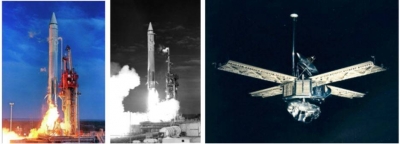
Riding on the success of Mariner 4, the U.S. National Aeronautics and Space Administration (NASA) planned a dual mission to the Red Planet for the near-Earth phase of Mars in 1969. The identical flyby missions were launched accordingly – Mariner 6 on 25 February 1969, and Mariner 7, just a month later, on 27 March 1969. On the 31st of July of the same year, Mariner 6 made its closest approach of Mars, passing by at a distance of around 3,400 kilometres from the surface. Just five days later, Mariner 7, which had caught up with its predecessor, also made its closest approach keeping about the same distance from Mars!
Mariner 6 and Mariner 7 took about 201 images, covering nearly 20 per cent of the surface of Mars! Some of them showed Martian craters containing ice, outlines of an ice cap at the South Pole, and dark features that had previously been mistaken for canals by astronomers. Data from the devices on the spacecraft also revealed that the atmosphere of Mars is thin, and made up of mainly carbon dioxide (about 98 per cent) and a small percentage of water vapour. They also detected minerals that indicated that the planet may have held liquid water in the past.
Together, the two Mariner spacecraft changed our understanding of the Red Planet. After successfully completing their mission in 1970, they are now spending their retired lives orbiting the Sun!
Picture Credit : Google




